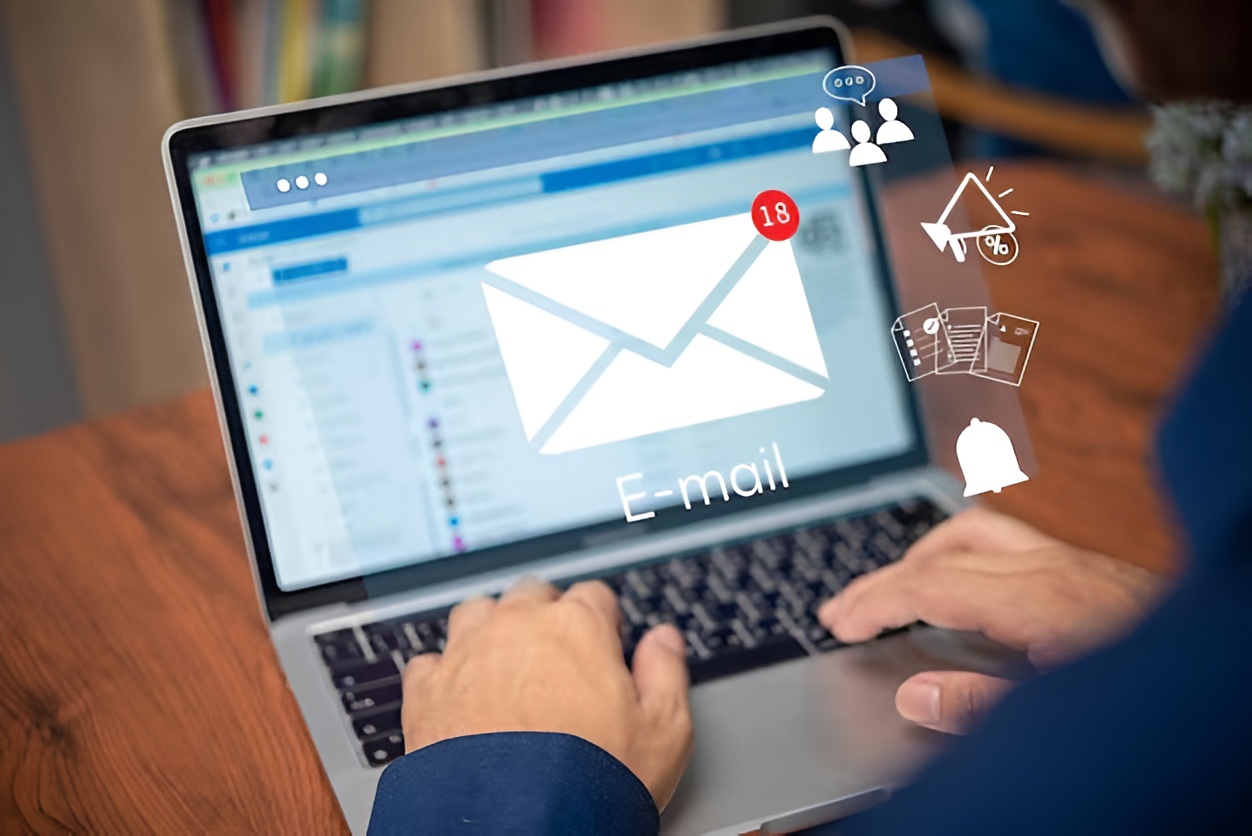In many ways, paid media is one of the oldest marketing strategies around. Paying for advertising goes back to the beginning of what we now call media. However, the digital world has accelerated the concept of paid media, and it is now a complex business.
Paid media means you are paying for some form of public-facing channel to carry a message about your business or organization. It is that simple. On the other hand, the ways digital channels have opened the process of paid media to multiple levels of carrying a message means paid media has taken on complexity like never before.
First of all, where we once had only a few media channels to work with, we now have the internet which has changed even these basic media channels. This introduces a wide range of options when it comes to paid media. In some cases, paid media is shared by others who are not paid at all. In other cases, we pay directly to digital platforms for maximum exposure.
What is paid media? What are the different types of paid media? And what are the benefits of paid media? This guide will introduce you to the various features of paid media and how you can benefit from paid media.
What is Paid Media?
Paid media refers to any external marketing strategies that involve things like paid advertisements, paid placements, branded content, and pay-per-click advertising. These are outbound marketing messages placed on paid media designed to push a specific brand message. The goal of paid media is to place marketing messages on media channels to generate increased brand awareness and increase sales and profits.
Paid media is a bedrock feature of marketing for generating leads and further strategies because it is relatively simple to track performance and make adjustments. Paid media is cost-effective and it has long been one of the best ways to continuously increase sales and brand awareness.
Four Types of Media
As we noted above, at one time paid media really only consisted of a few options. Television, print, and radio made up the bulk of media channels through which a business or organization could place paid media. We now have multiple options for paid media, and the digital realm offers strategies that further complicate paid media. The four main types of paid media include:
Owned Media
Owned media digital property on the web that you own and control. Owned media is unique to your brand. One of the best examples of owned media is your own company website. Blog sites and company social media are also great examples of owned media. These are owned and controlled by your company and are unique to your brand. Owned media are extensions of your company in that they are the forward-facing dimensions of your company’s public presence. The more owned media you have the more visible your brand is on the web and the better your chances for high rankings in a web search.
Earned media
Earned media would be any exposure you receive from methods and channels that are not paid advertising. Earned media is basically online word-of-mouth exposure for your brand. Earned media is often the type of exposure that drives traffic to your website and other owned media. Earned media can consist of things like online mentions on social media, reviews, third-party recommendations, and shares on social media. Earned media is one of the most effective forces for organic traffic to your website and other owned media.
One of the best ways to boost earned media is through good SEO strategies. The higher you rank in online searches, the more likely you will be mentioned and referenced on other media platforms. These types of things drive earned media. Earned media is one reason why it is crucial to have great content on your owned media.
Paid Media
Paid media is exactly what it sounds like: it is advertising you pay to have on other media channels. It is important to keep in mind that paid media does not exist in isolation. Paid media is one of the main drivers of earned media which of course sends traffic to your owned media. These media function in a holistic relationship in that each segment of the media sphere drives the others. Paid media works with other forms of media through things like pay-per-click (PPC) ads. These are ads that you pay to have on another host’s social media account. Display ads on social media are another example of paid media.
Shared Media
Shared media consists of any and all content posted on social media that directs people to your brand. Shared media is placed on Twitter, Facebook, Instagram, LinkedIn, and Pinterest. It is important to bear in mind that shared media does not work without owned media. Shared media is also a way of driving earned media. Again, the work of all advertising operates in an ecosystem that drives all aspects of media advertising.
Paid Media Benefits
Businesses and organizations are willing to pay for media advertising for the simple reason that it works. Some of the main benefits of paid media include:
Higher engagement rates
Since you can target your advertising toward specific demographics that you know are your target audience, you can count on increased activity over time. Paid media drives traffic to your website and drives profits.
Get more exposure
Paid media quite simply increases your exposure to wider audiences. You can count on the fact that customers would not find your company any other way. Paid media exponentially expands your reach.
Retain customers
Not only does paid media generate customers, but it also helps to keep your target audience interested. Paid media is a way to keep refreshing people’s minds on what you do and what your company can offer. Paid media maintains repeat business.
Establish credibility
Paid media increases your visibility in the market, and this establishes your brand as an authority in your field. By making your brand a recurring feature of your area of the market, you gain credibility within this market.
Generate online traffic: Paid media is one of the best ways to direct people to your website and other owned media. By generating this kind of traffic, you drastically increase the likelihood that people will buy into your brand.
Reduces marketing costs
With paid media, you are able to get all forms of media working together. These things feed on each other, and this reduces marketing costs in the long run. Paid media is the best way to maintain a self-generating media cycle that keeps your brand visible.
Paid Media Challenges
Even with the great benefits of paid media, there are challenges to paid media. Some of these challenges include:
Too broad in your paid advertising
Casing a wide net can be a disadvantage. Therefore, to get the most benefit from paid media you need to understand your customer base and the kinds of people who might be potential customers. Some knowledge of your demographics is necessary.
Difficulty re-targeting and trafficking
Successful paid media needs to make a lasting impression. To do this you need to know how to re-market your product or service in ways that keep it interesting. The first impression is important, but your paid media needs to continue to make an impression.
Bad landing experiences
It is important to dedicate part of your website to the kinds of things you are advertising in your paid media. If people click on paid media ads and are not directed to the things they are looking for, they will lose interest almost immediately. A well-planned and well-executed landing experience on your web page is essential.
Engagement and data collection
One of the goals of paid media is to generate long-term engagement with your customer base. Building a data collection is one feature of your website and getting customers to contribute emails can be a challenge.
Why You Should Use Paid Social Media
Paid social media is a great way to make sure your brand stays new and fresh in the minds of your customer base. You can continually refresh your content on multiple formats with video, images, stories, and other social media formats that remain engaging.
Which Paid Media is best for me?
PPC (Used to capture intent)
Pay Per Click, or PPPC ads, are ads in which you pay for each time someone clicks on the ad. You do not pay for ads that are not used. The most common type of PPC ad is the paid search ad. These are paid advertisements that appear on the search results page when someone is searching for a product or service similar to yours. These are great for generating interest because customers will click on your ad when they are looking for products and services that you provide.
Display ads (Used to build awareness)
Display ads are images and video ads that people see when they are browsing websites, apps, and social media. They have recently become more common on tv devices. Display ads are great for increasing your general visibility and making customers aware of your brand.
Branded content (Used as an effective response to a saturated market)
This is content created by an advertiser to appear with content on social media and other platforms alongside all other content on these social media. As opposed to artistic or editorial content, branded content will appear as any other content other than the fact that it is marked as paid advertising. Branded content is ideal for making your brand known within a highly competitive market.
How to create a Paid Media Strategy
The keys to creating a paid media strategy are to determine your budget, define your objectives, identify key performance indicators, and pinpoint your target audience.
Paid Media FAQS
What is Paid Media?
Paid media refers to any external marketing strategies that involve things like paid advertisements, paid placements, branded content, and pay-per-click advertising. These are outbound marketing messages placed on paid media designed to push a specific brand message. The goal of paid media is to place marketing messages on media channels to generate increased brand awareness and increase sales and profits.
What are the four types of media?
Owned, earned, paid, and shared.
How do you create a paid media strategy?
The keys to creating a paid media strategy are to determine your budget, define your objectives, identify key performance indicators, and pinpoint your target audience.
Paid media are a crucial part of an effective marketing strategy. Businesses are willing to use paid media for the simple reason that these strategies generate customers and repeat business. As you can see from this guide, there is a lot of paid media. While building a website and getting earned media is within anyone’s reach, an effective paid media plan is complex. HeyDay Marketing Services and Marketing Agency Service Integration can help you build a paid media strategy that works for your business and works within your budget.
From display ads to a full media advertising campaign, HeyDay Marketing Services can build a Marketing Agency Service Integration system that will address your marketing needs and build your customer base. HeyDay Marketing Services has professional consultants that understand how paid media works and how to get the most out of paid media.
HeyDay Marketing Services can build a Marketing Agency Service Integration that will allow you to find the kind of marketing agency and marketing strategy that will build your company. Whether you need help with SEO, social media exposure, or to increase your visibility on web searches, HeyDay Marketing Services and Marketing Agency Service Integration can help you position your business for increased growth and profit.
HeyDay Marketing Services offers Marketing Agency Service Integration that works for your company. We understand that one size does not fit all. For sound public relations strategies that work, allow HeyDay Marketing Services to take over the public relations for your business




